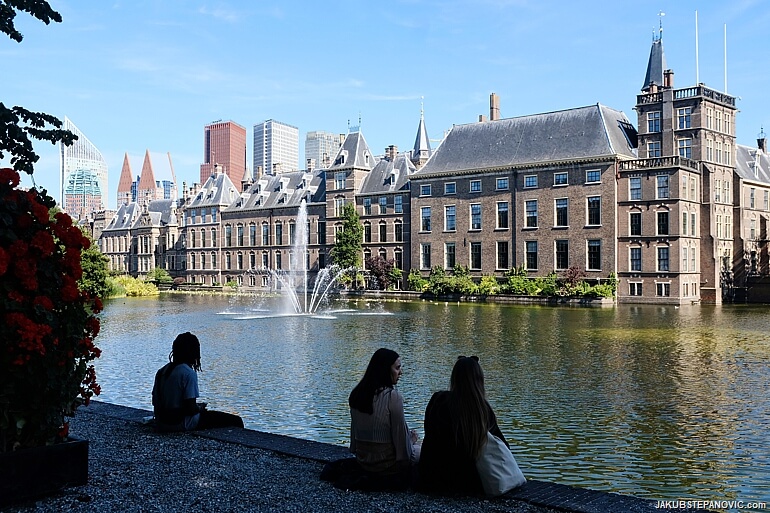
I moved relatively a lot over the last decade, which made me appreciate decent city planning, infrastructure, and relaxing places to the point that they excite me. I went to the Netherlands this summer and had plenty of materials to be excited about. Here are the categories that I especially liked:
Transportation Made Easy
Before enjoying a place, one needs to get there. I am a fan of making the road count, so I was happy that in the Netherlands, getting somewhere was enjoyable, too. All forms of mobility I used worked well: local roads were smooth and in good shape, and buses weren't getting stuck in traffic thanks to dedicated lanes and many traffic lights with sensors that gave them priority. Still, out of public transit, I especially enjoyed trains.
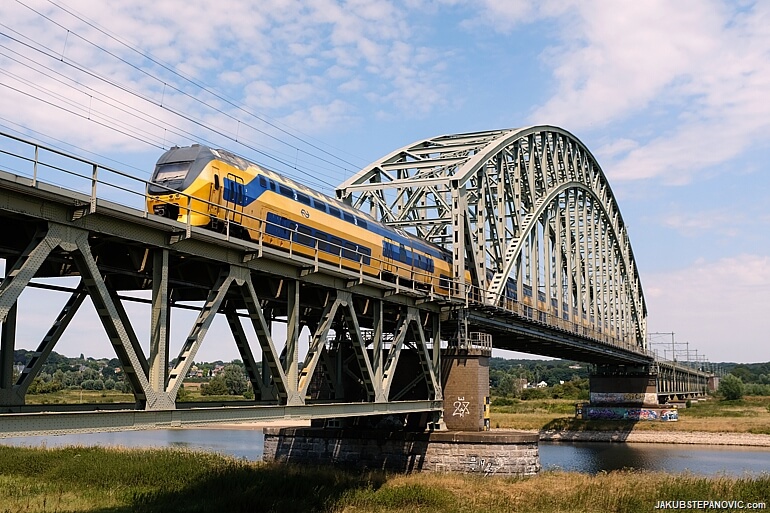
A Dutch InterRegio train crosses the Rhine.
All the train rides I experienced were nice and on time, and the connections were relatively frequent, too. I also saw people in suits; you know something's well with the public transit when someone uses it for whom the money isn't an issue. Speaking of money, Dutch public transportation is on the pricier end of Europe. Yet, it was still cheaper than if I'd rented and used a car here. A diversified transit portfolio came in handy when the world's turmoil went from one challenge to another, the oil supply dropped, and companies used it to maximize shareholders' profits. Furthermore, while I used public transportation, I got better comfort and views as a bonus.
Then, it was the integration. One could use one pre-paid card for all trains, trams, and buses. It was like the Oyster in London, only here it worked country-wide. Changing between connections was often without long layovers, thanks to synced schedules. And if combining public transit with a bike, I could park almost on the platform.
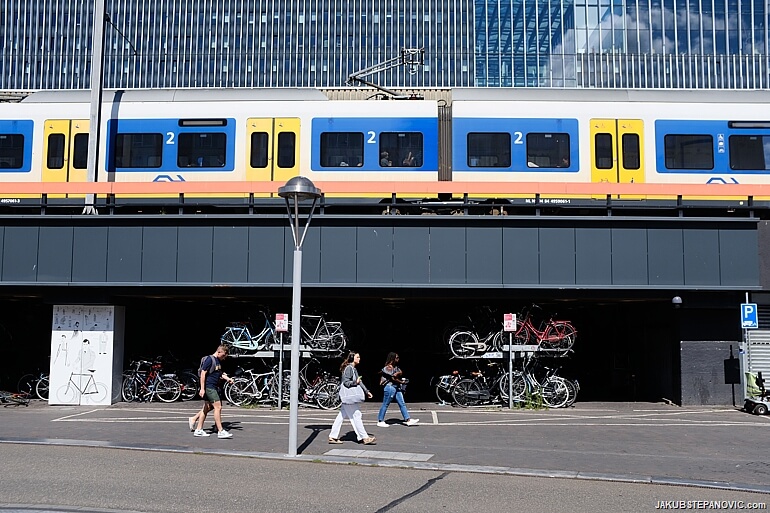
Leiden train station with an integrated parking garage for bikes, captured from a bus stop.
Bikes are a piece of the Dutch infrastructure puzzle that profoundly aids its convenience. I have already written about how the Dutch cycling system benefits the cities and makes cycling so effortless and safe that many people who don't care about cycling or bikes still cycle. But what if you care? What if you are keen on bikes? That brings me to the second category:
Cycling Heaven
Having an environment that supports cycling in cities means I could have fun on a bike while I commute. Yes, I enjoyed commuting on a bicycle elsewhere, but it always took extra time and dedication. Not in the Netherlands, where cycling is often the fastest and most suitable way to reach places. And besides the excellent paths themselves, it was their surroundings. As I rode, I passed pleasant nature, cool architecture, and cute animals.
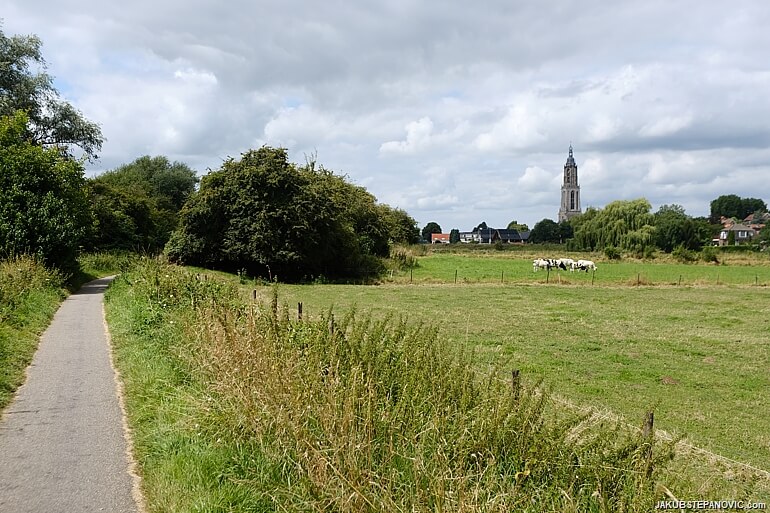
It wasn't hard to score a peaceful path like this within city limits.
Then, many little perks improve Dutch cycling. For example, dedicated trash cans.
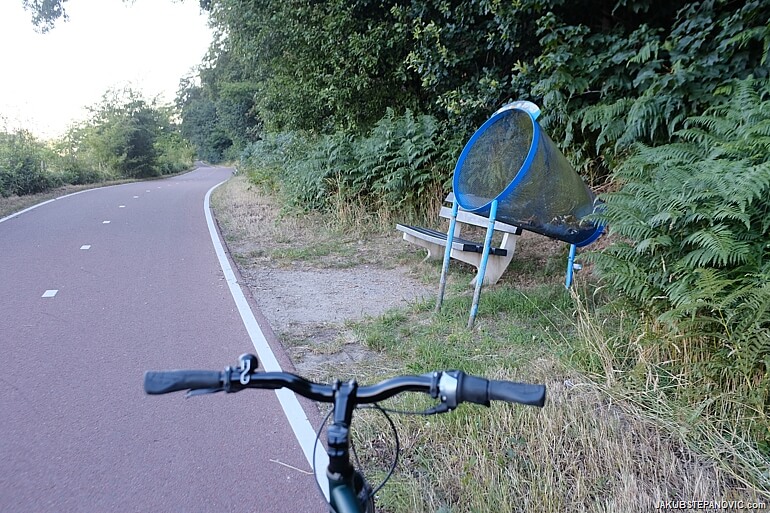
Trash can for bikers, so one can bin things without stopping.
But do you even need that? Well. It isn't just the bike roads that are super comfortable; many of the city bikes are too. They have relaxed geometry, making cycling so easygoing that one can make a sandwich while cycling. Then, a bin can come in handy. These bikes are for moving in comfort, not so much for sport. If you want, you can still push the muscles a bit, but other times, it doesn't even need to feel like you are cycling at all. It felt like riding a couch. Here's me, riding to a beach one evening, laying on the handlebars as if it were a bar. While taking a selfie.
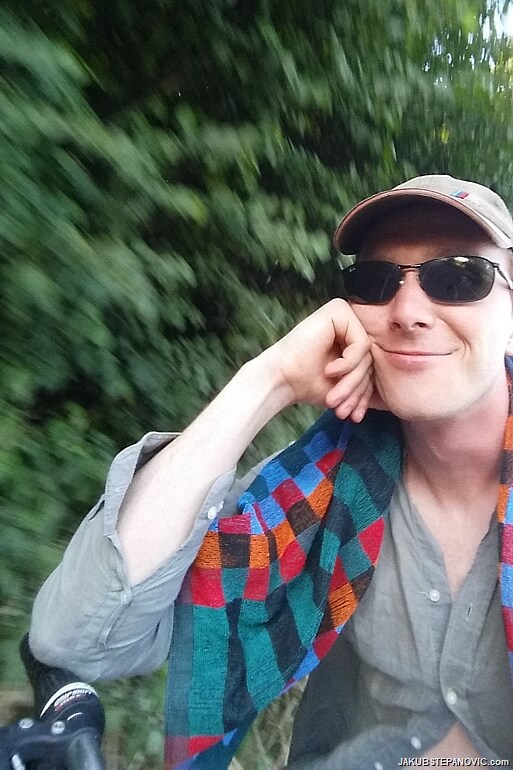
Cycling probably won't get more casual than this.
I smiled a lot while I cycled, as all this combined made me surprisingly emotional. And when I encountered others, they smiled back. So good! It was like we shared the happiness of the space and the moment. When I got to my destination, I was joyful and refreshed without spending extra time on the journey. How many places can say that about their commuters?
And I am not done yet. The Netherlands surprised me with beautiful woodlands, and they also have smooth cycling paths.

However, they also have off-road trails. It's not proper mountain biking, but that's to be expected; the Netherlands is flat as a stroopwafel, after all. Perhaps that is why it felt ever so grand to discover that they cater to mountain bikers.
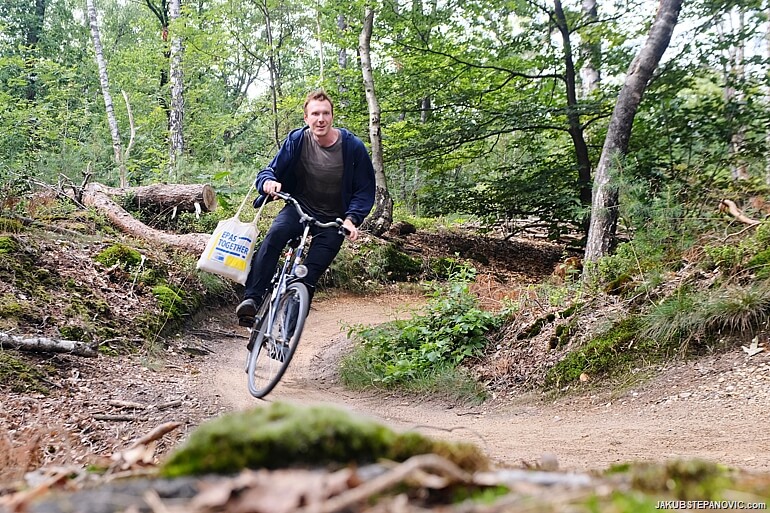
That's a way to go grocery shopping! Happy days!
The only reminder that I am not in actual heaven came with a flat tire. Physics in the Netherlands still works as they do elsewhere on Earth. Oh well. I still take it.
Moving on; we are getting to the places themselves. How are they?
Cities for People
Of course, who else should they be for? While cities all over the world house people, some make their stay more pleasant than others. There are many elements that contribute to it:
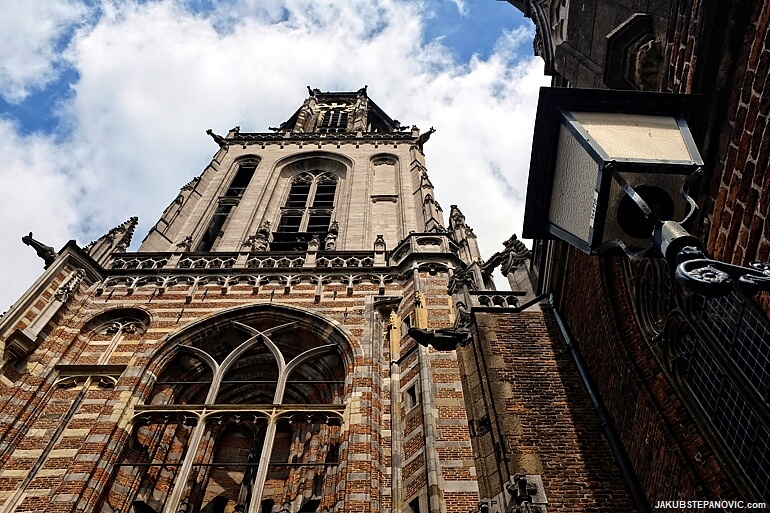
Cunerakerk tower in Rhenen, dating to the late 15th century.
Finding appealing architecture is easy here, and I was happy to see that the Netherlands fixed many industrial structures to decorate the cities and raise awareness about its past.
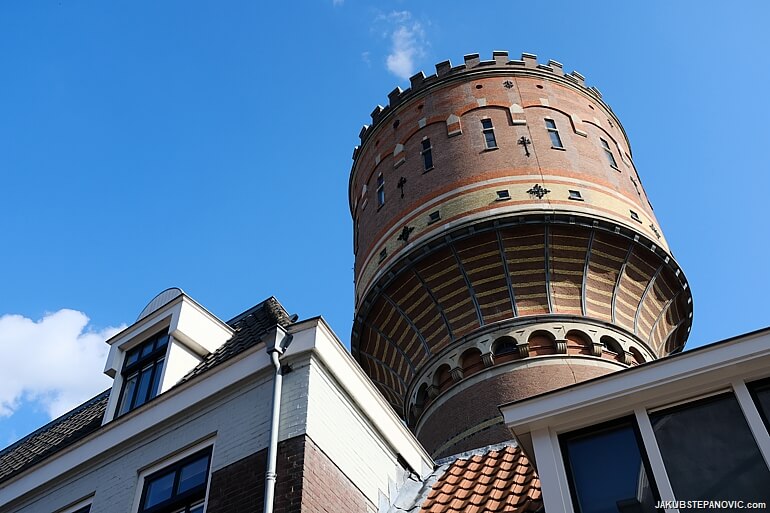
This former water tower in Utrecht contains fancy offices and flats now; another one is turned into a restaurant.

One of many Dutch windmills. This one is in Amerongen.
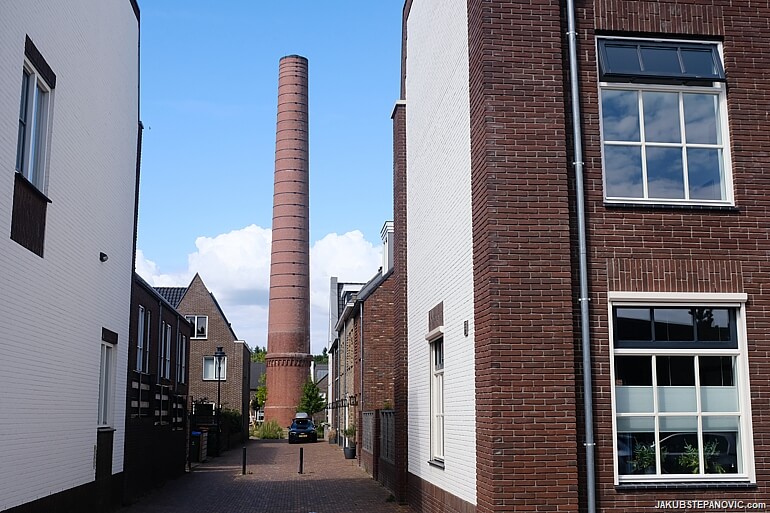
A smokestack of a former synthetic fibers factory decorates a new residential neighborhood in Ede.
It appeared to be a pattern; locals don't let many old buildings decay. I saw less than five abandoned buildings while traveling through the country. Impressive.
I also liked that even the big cities didn't feel like concrete jungles; they still had a human scale and offset the buildings with frequent public greenery.
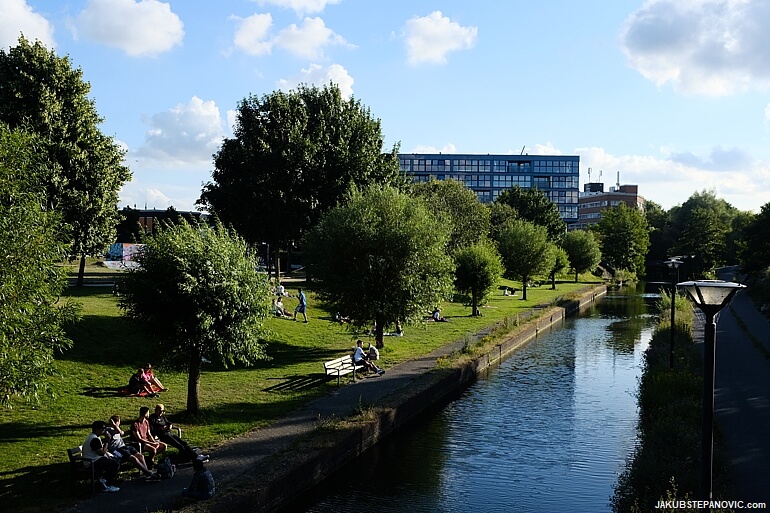
Utrecht's Griftpark
The parks were clean, trimmed, accessible free of charge, and you could sit or play on the grass. I wish I wouldn't have to highlight these as noteworthy features but having them is the same as having decent transportation.
Dutch parks might lose the edge to France's flower-richness but are still splendid on that front. And they made up for it with outdoor play fields and gym equipment for all ages.
However, cool buildings and parks on their own aren't the main elements. That would be their layout, which lets people to reach those places with ease: City centers were composed of mixed developments that allowed for a dense population density, which established a more compact layout, aiding accessibility to services such as shops, healthcare, and education. Arguably, they are also nicer.
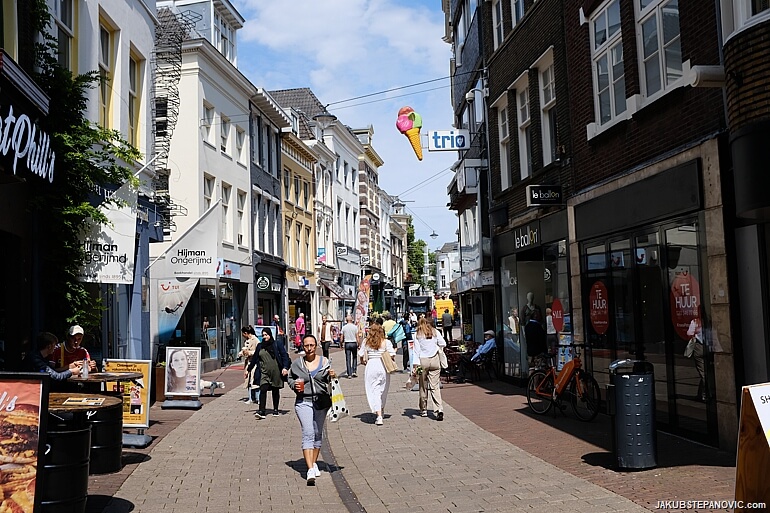
Most things in downtowns are within walkable distance, and as many streets have restricted car access, being out feels safe, and one doesn't need to listen to revving engines and breathe dust while being there. Pictured is Arnhem.
It wasn't always this way. Earlier in the 20th century, the Netherlands constructed city streets for cars, like many countries at that time. Look at this main street in Veenendaal, captured in 1935; it looks like it could be a postcard from North America.
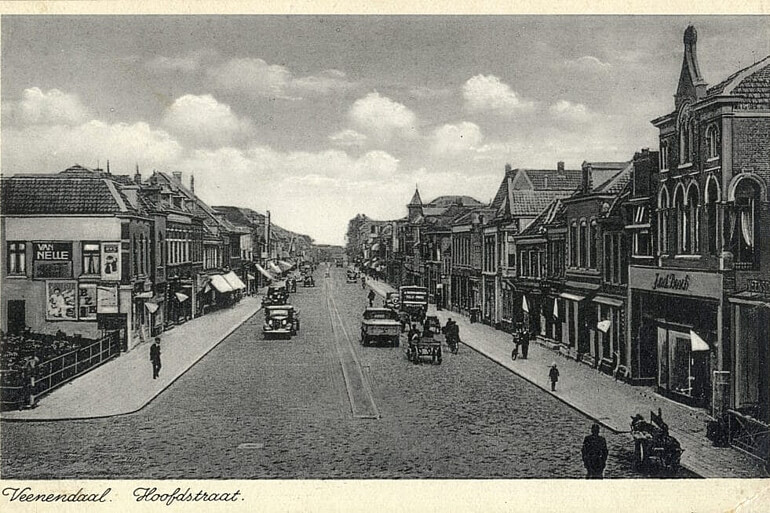
Source: Utrechts Archief.
As the number of automobiles increased, people in both Europe and America realized that living by a thoroughfare was miserable. The difference is that American cities upheld the car as the ultimate form of transportation and ditched compact cities for sprawling suburbs with enough asphalt to accommodate more cars, but also forcing everyone to drive as everything became miles away. On the other hand, the Netherlands invested in the transportation I described above and prioritized walking and biking in their downtowns. So they thrive. The photo below is how the high street in Veenendaal looks nowadays, captured during the evening, past business hours.

Despite most shops being already closed, I saw a decent number of people still around. There goes the "limiting cars in cities prevents people from going in" argument I heard in the past. If the city is designed well, people want to be there. And I would insist that replacing cars with trees, as Veenendaal did, make people want to be there more. It is safer and more comfortable, and the slowed traffic helps businesses, too – people are more likely to be attracted by some storefront and stop by than if they'd drive. It is all by design.
It is not an isolated case either; I saw it in every Dutch downtown I visited. Even a town of under 10,000 people had a cool, lively city center. Big cities are then a story on their own:
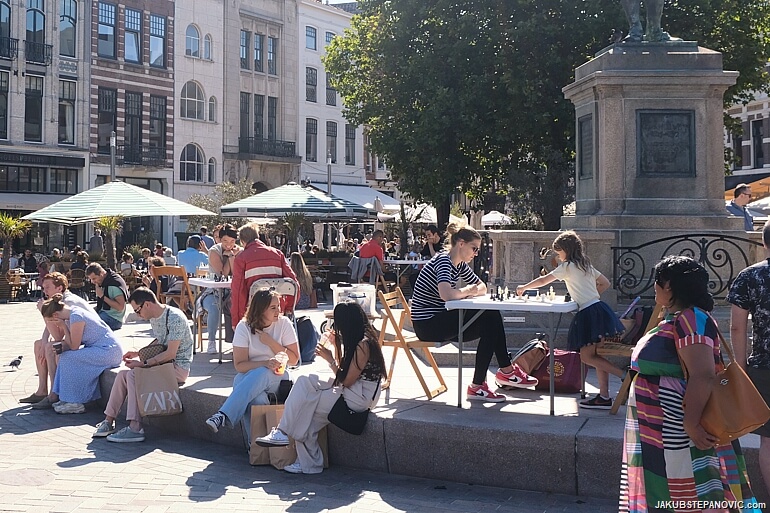
The Hague (pictured), and other Dutch cities I saw, do a good job designing and upkeeping places that invite folks to spend time there.
Now, it isn't hard to find cities shifting towards pedestrians elsewhere, including the US. What makes the Netherlands special is that it started some 40 years ago, so it has already addressed early issues, which is evident in every newly built project.
When I visited China, I felt like I had a glimpse into the future of technology. In the Netherlands, I felt like I had entered the future of people-focused civil and transport engineering. That should be the bottom line, but there's much more to unfold.

Street art in the Hague
Public artwork is another thing I enjoyed here. Outdoor sculptures were all over the place and ranged in size and shape; thus, chances are that many find some they are fond of.
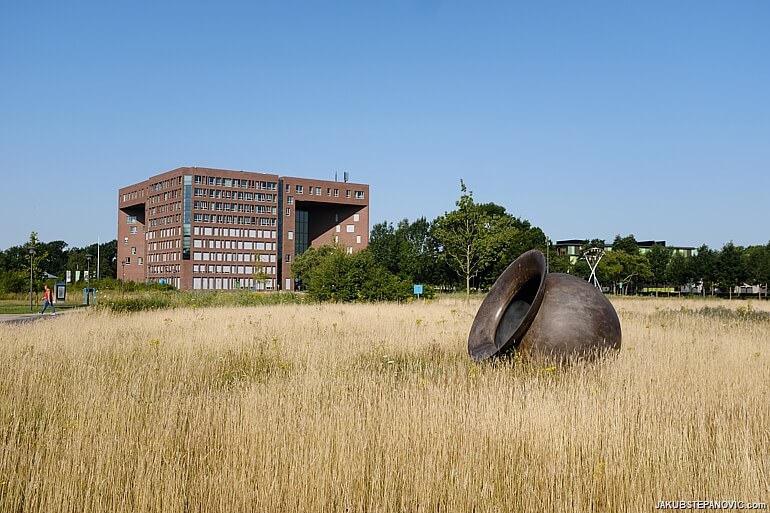
Wageningen
Even if someone dislikes art, they can't deny its positive impact on the economy. It is these unusual additions in an urban landscape that get people interested. Besides bringing tourists, they make good meeting spots and orientation points.
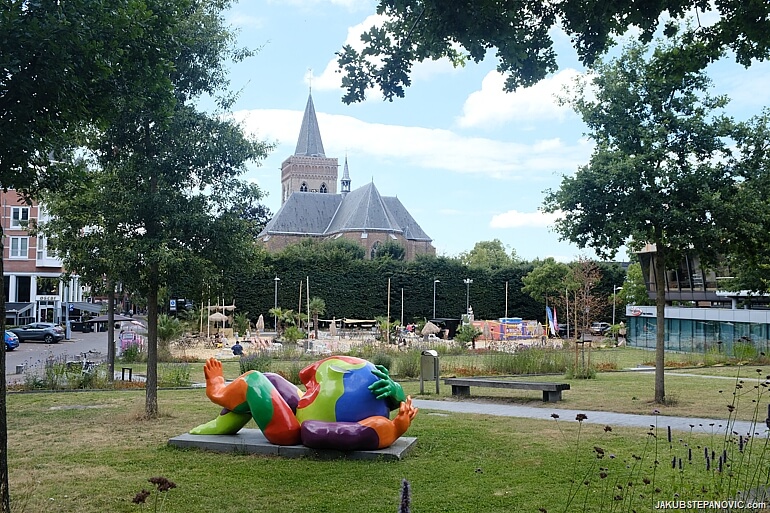
Ede
And the excitement isn't running high only in the cities; only a short bike ride away is...
Nature
..And it delivers. The mentioned forests are terrific without a bike, too.

It gets better; they can be full of tasty, healthy snacks.
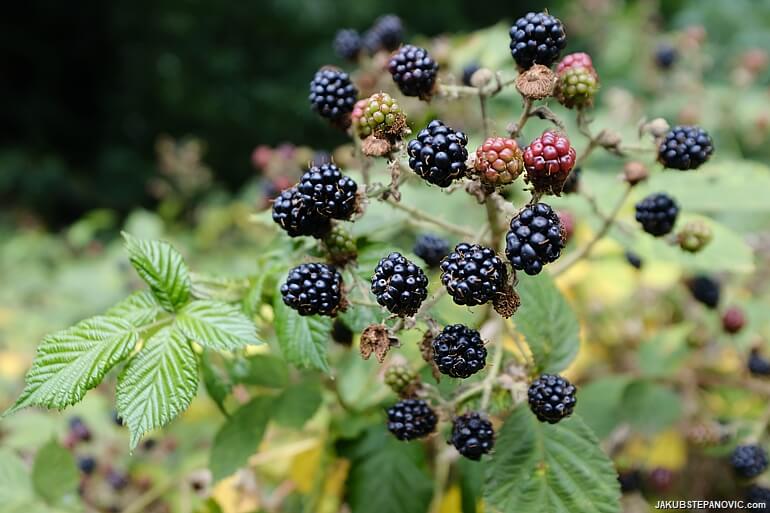
A definition of happiness from small, simple things in one picture.
Woods or not...
...The paths that go through local nature are lovely...
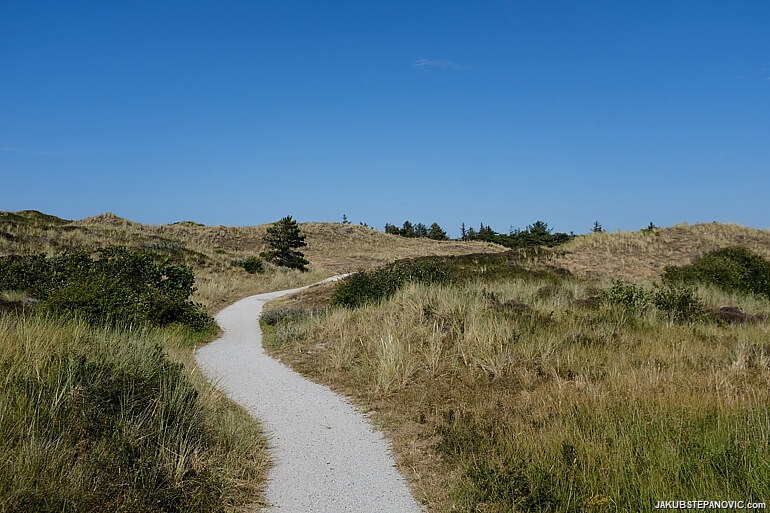
Texel Dunes
...And can take you to magical places...
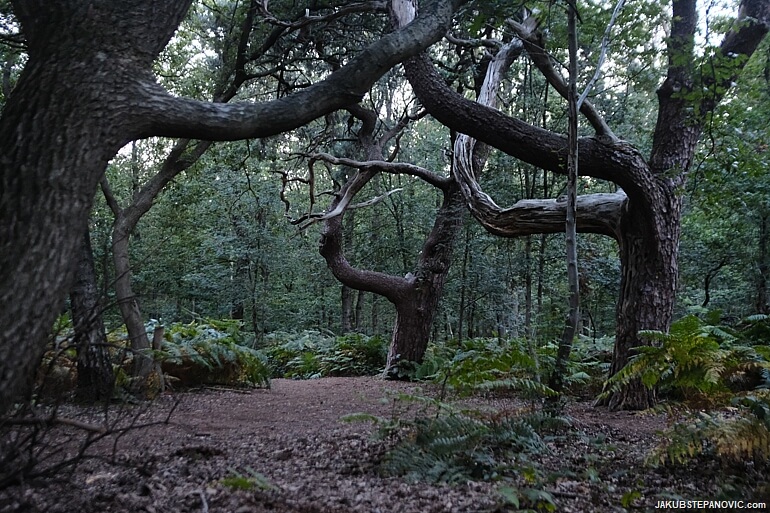
Such as..
The Sea
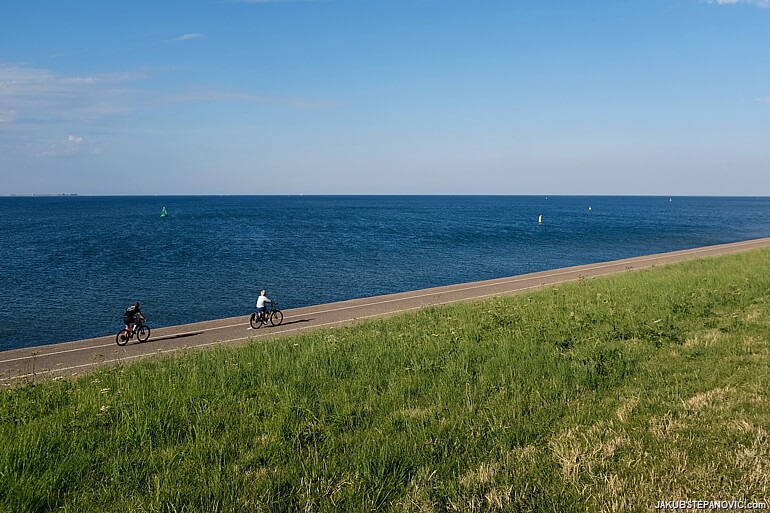
The Netherlands has no mountains. But it has sea, which is a pretty sweet alternative. Salty, in fact, but you know.
Swimming in the sea always felt special to me, and it was no different here. The Dutch beaches are more crowded than I was used to in Scotland, but one can find a spot with enough room for themselves.

The higher water temp means that one can swim for longer, and instead of getting into a jacket afterward, one can have a snack at one of the many cafes the beaches have.
Singled out, neither of the things I wrote about here is exclusive to the Netherlands – Maybe except for the biking infrastructure; that's quite special. But having them together is unique, and it makes for a fine place to be. I am grateful for being able to witness it.
If you liked this article, you might enjoy reading about other places I found exciting, such as:
Alternatively, browse my Blog Archives for more topics and categories. Thanks for reading!
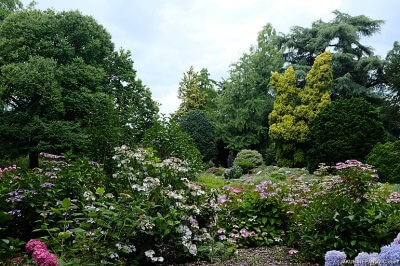
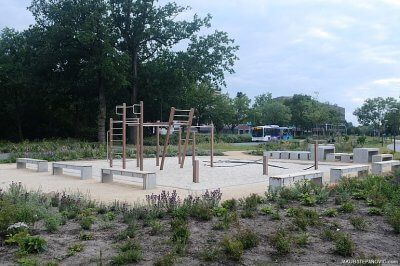
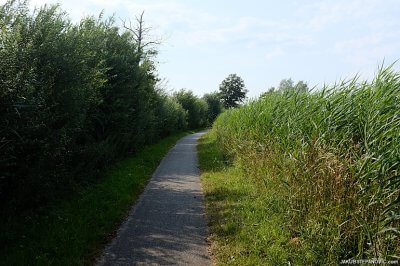

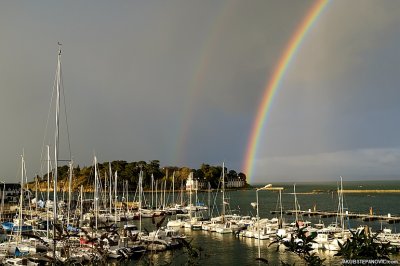
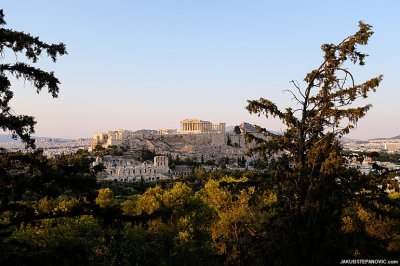
Comments are closed.